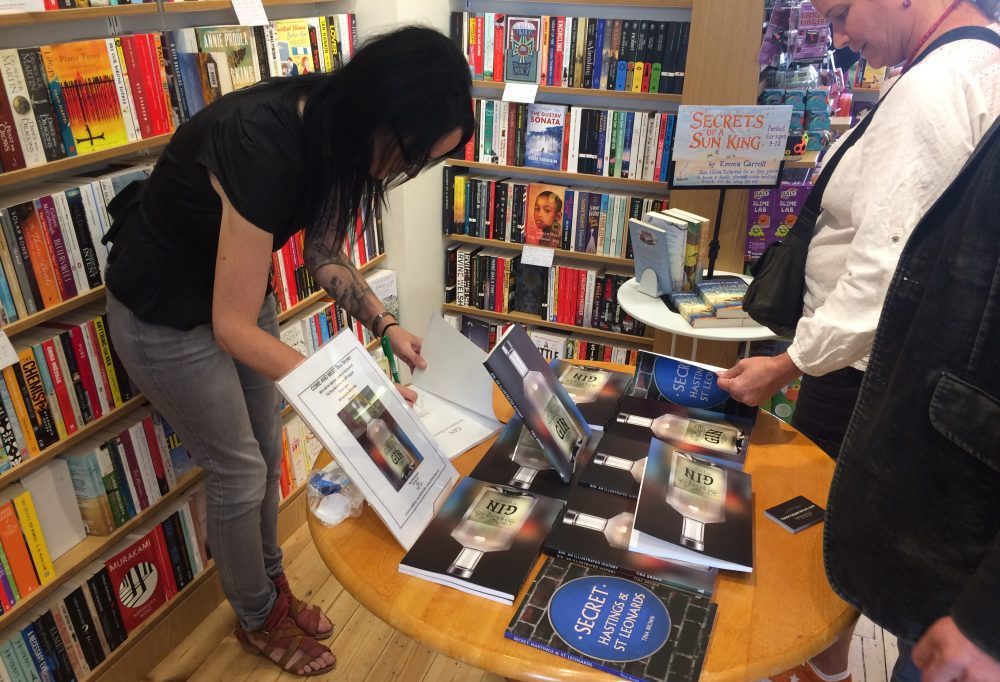After an evening and morning of music and the organised mayhem of the jazz festival, what better way to relax than a visit to the Rye Bookshop and some gin.
No, not a glass of it (well, maybe a very little one or two) but to discuss a new book, Gin, an Illustrated History, the story of the translucent nectar, with its author, Tina Brown.
Tina was busy signing copies of the book when I arrived to discover that I had just been beaten to the sampling table by one of my Rye News colleagues, both of us clearly upholding the fine tradition of the fourth estate’s close relationship with alcohol.
The book itself is fascinating, and Tina has certainly done her research. Those of us who remember some social history may recall the gin houses and gin alleys of 18th and 19th century London, so vividly depicted by the likes of Hogarth and his contemporaries. But did you know that alcohol (albeit possibly not Gordon’s finest London Dry) has been known and drunk for over 10,000 years? (those clever Chinese seem to have had it first), or that it was once used as a cure for the Black Death? And do you know where the term “Dutch courage” comes from? Or what a gin palace was – other than a Russian oligarch’s yacht? (I’m not going to tell you – you will have to read the book!)
But, of course, alcohol does also have its downsides. In the 18th century, addiction to gin became so widespread and the problems caused so serious, that the government of the day imposed a minimum charge at which it was to be sold and also began to license the sellers of it. Was this really because of the addiction or did our rulers suddenly realise that they were missing a trick and here was an opportunity to raise money, but maybe I am just being over-cynical. Either way, taxes on alcohol are still with us and so, as of a few months ago, is the idea of a minimum price.
250 years ago there were at least 1,500 distilleries in London, alone. Today, when the naysayers and sundry quacks purse their lips and frown at the mere thought of anything so satanic as gin, there are just a few. However they do exist, and not just the big distillers. There are a surprising number of small and artisan distilleries both in London and around the country – the West Country, for some reason, seems to have more than its fair share.
Altogether, a fascinating short history of a drink that has caused both joy or misery throughout the centuries and which can be read with, or without an accompanying gin and tonic.
The book is available from the Rye Bookshop and other good retailers, price £14.99
Photo: John Minter



